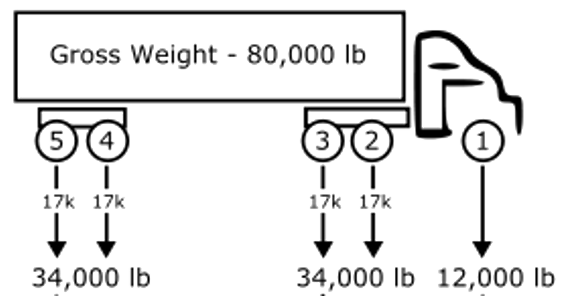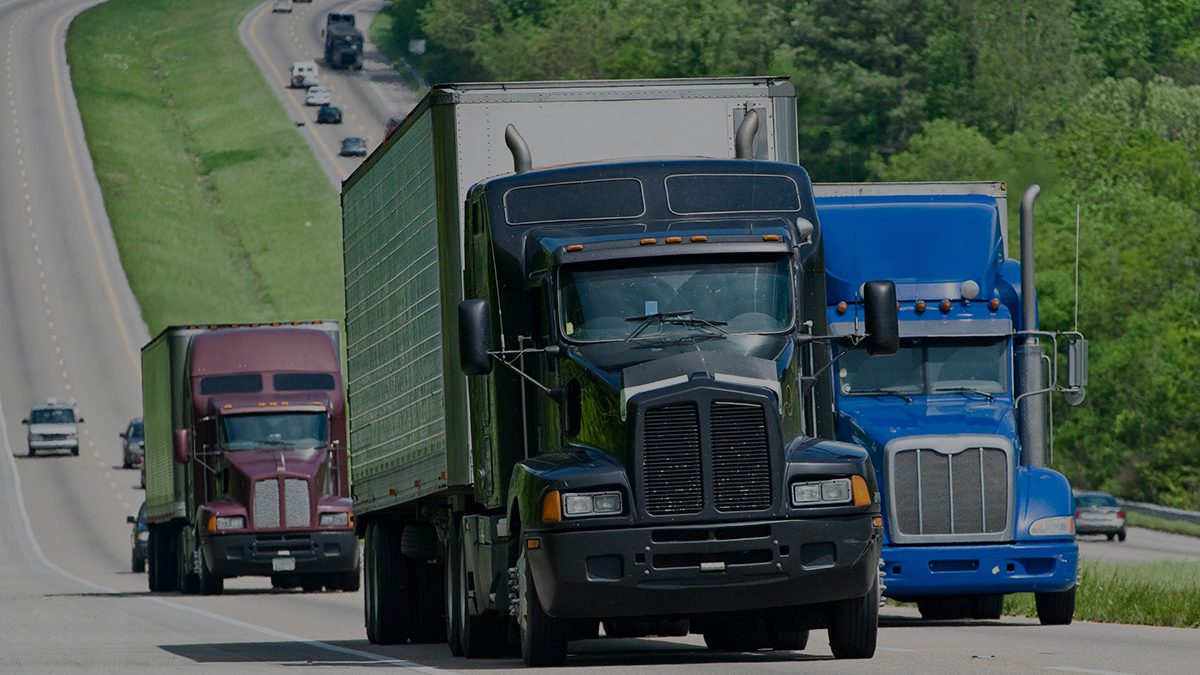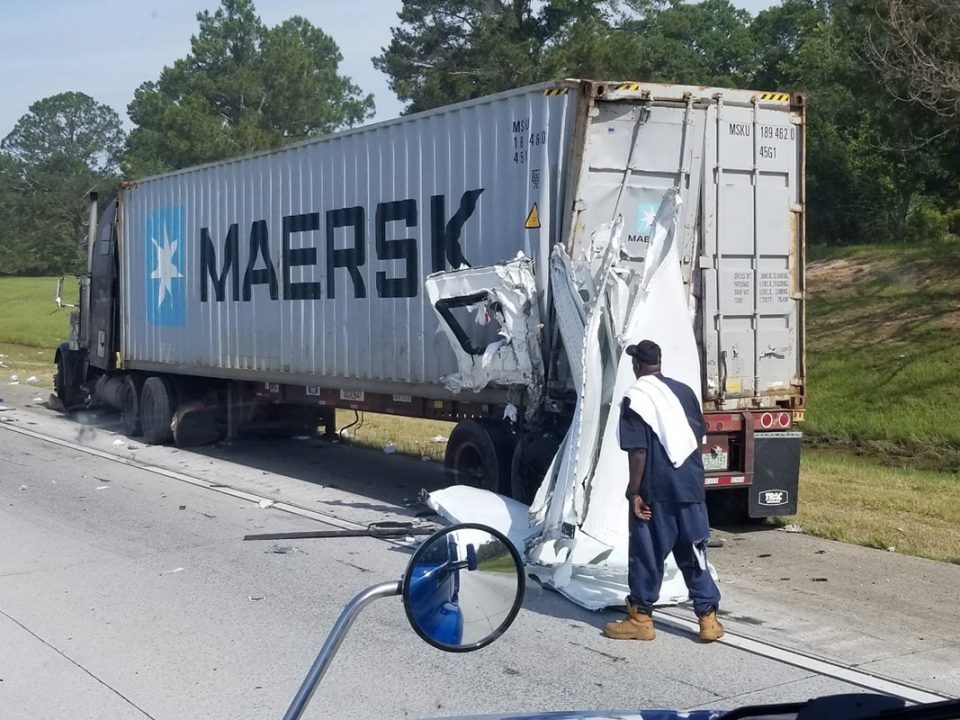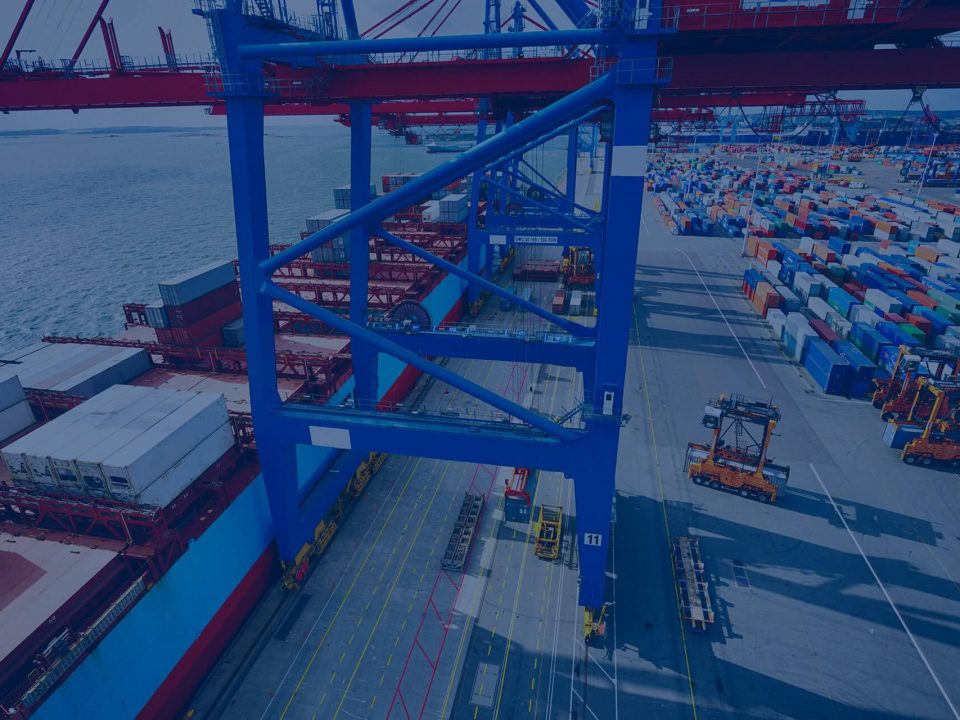FOR CONTAINERS ON WHEELS
Accident damage risks faced by the cargo can be insurance wrapped, but not when weight of the Container trucks exceeds the maximum stipulated by the State authorities in the United States. When the loaded truck’s weight exceeds the maximum allowed, there will not be just fines but also delays and costs for the shipper.
Introduction
The following are the major parts of regulations for on-the-road, container loaded trucks in the USA:
- Restrictions on maximum (A) load weight of the container truck
- Restrictions on maximum (B) Gross Weight of the truck, including the weight of container
- Restrictions on maximum (C) weight Per Axle and per Tandem-Axles of the container loaded truck
This blog is on the first element, but let us understand what is meant by A, B and C above with a pictorial example:
 In the above case, A = 34,000 + 34,000 = 68,000 lbs, which is the total load weight of the container truck. It is easy to notice that total load weight includes the weight of the truck’s chasses and tires.
In the above case, A = 34,000 + 34,000 = 68,000 lbs, which is the total load weight of the container truck. It is easy to notice that total load weight includes the weight of the truck’s chasses and tires.
B = 80,000 lbs, which is the total weight of the whole truck, which includes both the load (68,000 lbs) and the prime mover (12,000 lbs).
and C = 34,000lbs, which is the weight on Tandem Axle 2+3, which is also equal to the weight on Tandem Axle 4+5. If the two weights are equal, it means the weight inside the container has been evenly distributed.
To be sure, this blog is about the maximum weight of the load on the truck, as depicted by “A” and also the maximum weight on any axle or tandem axle, as shown in “C”.
Why It Is Important?
It is worth a mention here that these weight restrictions are meant to avoid both accidents and road damage. When the imported or an export-bound container is on road in the United States, the shipper must know its risk exposure to accident damages and State fines related with excess weight of the container truck’s load. Accident damage risks faced by the cargo can be insurance wrapped by the shipper, but not when weight of the load exceeds the maximum stipulated by the State authorities.
Ultimate Onus
When a trucking company is called in to pick a loaded container from the port or the warehouse, an experienced freight forwarder expects the trucker to ask and verify two factors; the total weight of the container and its even distribution. If the trucking company does not bother asking and/or verifying about it, it is probably best to avoid engaging this trucker. Next, if your freight forwarder does not ask you about it, then it is best to avoid this freight forwarder too.
The whole responsibility, and ensuing costs, belong to the shipper to ensure that the container is evenly loaded and the container weight does not make the truck’s load exceed the maximum weight limit allowed by the States through which the truck will travel. Having said that, generally all shipments moving in and out of terminals are weighed, interchange reports are issued at respective times. All truckers notify their freight forwarders at particular time if shipment is over-weight.
Container Weight Restrictions
First, the reader must know that a valid Container Safety Convention (CSC) plate on the container specifies the maximum weight of the loaded container and if exceeded, the containers will likely not be accepted by the shipping line. This loaded container’s max weight mentioned on the CSC is not the same as on-the-road maximum allowed weight of the container-on-wheels, in both the origin and destination countries. Another important thing, , it is not mentioned on the CSC plate that the cargo weight is to be evenly distributed inside the container.
In the United States, there are maximum load limits for container trucks. Along with these weight limits, there are bridge laws which restrict the spacing and maximum weight on axle groupings.
The Tables
Here are two tables on max container-on-wheels weights as allowed in different States of USA, with glossary of terms used at the end, but contact TEU Global (www.teuinc.com) at info@teuinc.com, or call us at +1 732-515-9040; if there is any specific query or more information is sought.
United States – ZONE A
|
Zone A Includes Arizona – Iowa – Nebraska – Oregon – Arkansas – Kansas – Nevada – Rhode Island – California – Kentucky – New Hampshire – South Dakota – Colorado – Maine – New Jersey – Texas – Connecticut – Massachusetts – New Mexico – Utah – District of Columbia – Michigan – New York – Vermont – Idaho – Minnesota – North Dakota – Washington – Illinois – Missouri – Ohio – Wisconsin – Indiana – Montana – Oklahoma – Wyoming – West Virginia |
|||||||
| Load Type | Length | Truck Type | Weight Limits | Weight Limit Exceptions | Weight Limit Exceptions | Weight Limit Exceptions | Weight Limit Exceptions |
| DC/HC/OT/FR | 20 Feet | Without Tri-Axle | 38,000lbs | Illinois 34,000lbs | California 36,500lbs | ||
| 20 Feet | With Tri-Axle | 44,000lbs | |||||
| 40 Feet | 44,000lbs | Missouri 43,000lbs | Illinois 43,000lbs | ||||
| RF/RH | 20 Feet | Without Tri-Axle | 34,000lbs | California 32,000lbs | Illinois 32,000lbs | Indiana 32,000lbs | Wisconsin 32,000lbs |
| 20 Feet | With Tri-Axle | 41,000lbs | California 38,000lbs | Illinois 38,000lbs | Indiana 38,000lbs | Wisconsin 38,000lbs | |
| 40 Feet | 41,000lbs | California 39,000lbs | Illinois 39,000lbs | Indiana 39,000lbs | Wisconsin 39,000lbs | ||
United States – ZONE B
|
Zone B Includes Includes Alabama – Maryland – Tennessee – Delaware – Mississippi – Virginia – Florida – North Carolina – Georgia – Pennsylvania – Louisiana – South Carolina |
||||||
| Load Type | Length | Truck Type | Weight Limits | With Permits | Weight Limit Exceptions | Weight Limit Exceptions |
| DC/HC/OT/FR | 20 Feet | Without Tri-Axle | 38,000lbs | |||
| 20 Feet | With Tri-Axle | 44,000lbs | 46,000lbs | South Carolina 43,000lbs, with Permit 45,000lbs | Tennessee 42,000lbs, with Permit 45,000lbs | |
| 40 Feet | 44,000lbs | 51,000lbs | ||||
| RF/RH | 20 Feet | Without Tri-Axle | 34,000lbs | |||
| 20 Feet | With Tri-Axle | 40,000lbs | 34,000lbs | |||
| 40 Feet | 41,000lbs | 43,000lbs | ||||
In the first column of both tables, following abbreviations were used:
DC = Dry Cargo, the standard shipping container used for dry cargo. Made from steel, it is predominantly in 20′ or 40′ lengths and has loading doors at one end.
HC = High Cube, a container that is 9’6″ high instead of the standard 8’6″ high
OT = Open Top, a dry cargo container without a solid roof. Over-height cargo and heavy machinery can be loaded from above and a weatherproof tarpaulin is fitted over the top FR = Flat Rack, a heavy-duty container “base” used for carrying bulky or heavy cargoes. Fitted with end frames which are either fixed or folding and which constitute the corner posts for lifting and stacking
RF = Refrigerated container, normal
RH = Refrigerated container, High Cube
Important Notes
3rd and 4th Columns: They show which truck is more suitable for the 20 feet container. A tri-axle truck is more costly but the shipper might need it, considering the slightly excessive container weight.
5th and remaining columns: These show the States that have different max weight restrictions and permits.






